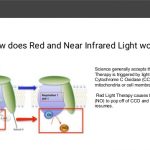Last Updated on 12 months by Francis
An electrochemical cell, also known as a galvanic cell, operates through the transfer of electrons from one electrode to another. During this process, a potential difference between the electrodes is created, resulting in a flow of current. This potential difference is known as the electromotive force (EMF) of the cell. In this context, EMF refers to the ability of a cell to generate an electric current and is a measure of its inherent voltage. This introduction will provide an overview of what EMF is in a galvanic cell.
Contents
Understanding EMF
Electromotive force (EMF) is a measure of the energy that drives an electric current. In a galvanic cell, EMF is the potential difference between the two electrodes. It is the driving force behind the flow of electrons from the anode to the cathode.
The Components of a Galvanic Cell
A galvanic cell consists of two electrodes, an anode, and a cathode, that are connected by a wire. The anode is the electrode where oxidation occurs, and the cathode is the electrode where reduction occurs. The two electrodes are immersed in an electrolyte solution that allows the flow of ions between them.
How EMF is Generated
The EMF in a galvanic cell is generated by the chemical reaction that occurs between the anode and the cathode. The anode undergoes oxidation, which releases electrons into the wire connecting the two electrodes. The electrons flow through the wire to the cathode, where they are used in the reduction reaction. The chemical reaction that occurs at the anode and cathode generates a potential difference between the two electrodes, which is measured in volts.
The Importance of EMF
EMF is essential for the operation of a galvanic cell. It is the driving force behind the flow of electrons from the anode to the cathode. Without EMF, there would be no flow of electrons, and the cell would not produce an electric current.
Misconceptions about EMF
There are several misconceptions about EMF that are important to address. One common misconception is that EMF is harmful to human health. While high levels of EMF can be harmful, the EMF generated by a galvanic cell is relatively low and not harmful to human health.
EMF and Radiation
EMF is often associated with radiation, which can be harmful to human health. However, the EMF generated by a galvanic cell is not the same as electromagnetic radiation. EMF is a measure of the energy that drives an electric current, while electromagnetic radiation is a form of energy that travels through space.
EMF and Electromagnetic Fields
EMF is often associated with electromagnetic fields (EMFs), which are the fields of force around electrically charged objects. While EMFs can be harmful, the EMF generated by a galvanic cell is relatively low and not harmful to human health.
Applications of EMF
Galvanic cells have a wide range of applications in everyday life. Batteries are one of the most common examples of galvanic cells. Batteries are used to power a wide range of devices, from flashlights to cars.
Another important application of galvanic cells is electroplating. Electroplating is used to deposit a layer of metal onto a surface. The metal to be deposited is used as the cathode in the cell, and the metal to be plated is used as the anode. Electroplating is used in a wide range of industries, from automotive to jewelry.
Galvanic cells are also used in fuel cells. Fuel cells are devices that convert chemical energy into electrical energy. Fuel cells consist of two electrodes, an anode, and a cathode, that are separated by an electrolyte solution. Hydrogen gas is used as the fuel, and oxygen gas is used as the oxidant. The chemical reaction that occurs at the anode and cathode generates an electric current that can be used to power devices.
FAQs for What is EMF in Galvanic Cell?
What is a Galvanic cell?
A Galvanic cell is an electrochemical cell that can generate electrical energy from a chemical reaction.
EMF stands for Electromotive Force, which is the driving force of the chemical reaction that generates electricity in a Galvanic cell. It is the measure of the potential difference between the two electrodes of the cell.
How is EMF measured in a Galvanic Cell?
EMF can be measured using a Voltmeter. A Voltmeter is connected to the two electrodes, and the potential difference is measured. The unit of measurement of EMF is volts.
What is the relationship between EMF and the direction of the current flow in a Galvanic cell?
EMF determines the direction of the current flow in the Galvanic cell. The current flows from the electrode with a higher potential to the electrode with a lower potential. This generates a voltage difference, which forces the electrons to flow from the anode to the cathode.
What factors determine EMF in a Galvanic Cell?
The EMF in a Galvanic cell is determined by The standard reduction potential of the two electrodes. The standard reduction potential is essentially the tendency of the electrode to gain or lose electrons. If the electrode has a higher tendency to lose electrons, it will have a more negative reduction potential, and vice versa.
How does temperature affect EMF in a Galvanic Cell?
Temperature can also affect the EMF in a Galvanic cell. The EMF decreases with increasing temperature because the reaction rate increases, leading to a faster reaction that generates less voltage. Conversely, the EMF increases with decreasing temperature because the reaction rate slows down, leading to a slower reaction that generates more voltage.

.jpg)
.jpg)
.jpg)



